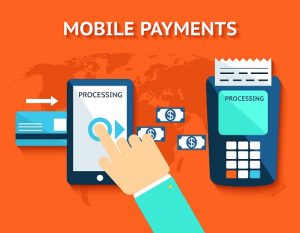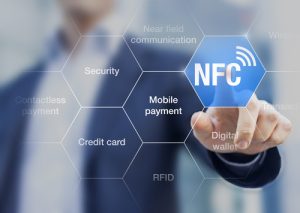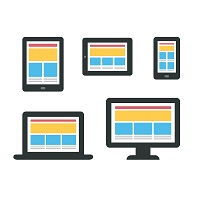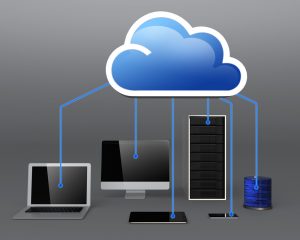Category: Technology
Mobile payments are of a recent origin but have caught on like wildfire. Mobile-driven commerce now exceeds US$972.25 billion, and mobile payments are expected to touch US$3 trillion by 2021. This figure will equate to about 11% of all consumer card payment volume, up from the present levels of 6%.
Here are the top trends shaping mobile payments market.
Demographics Shape Mobile Payment Growth
The bulk of the growth in mobile payments market is from the Asia-Pacific region, especially China. Chinese customers now make more payments through mobile devices than through desktops. The high level of smartphone penetration cuts across both urban and rural areas.
The mobile-first mindset is catching up in the US and the UK as well. By 2020, more consumers in these countries will make payments for goods and services over smartphones than through desktops. About 46% of all digital commerce in the US and 38% of all digital commerce in the UK would be through a mobile device by 2020, up from 20% and 12% respectively, in 2015.
It comes as no surprise that cutting across geographies, the up-and-coming generations are in the forefront of adopting new technologies, and embracing mobile wallets in big numbers.
Convenience of On-the-Go Consumption Drives Growth
The chief factor driving the growth of mobile payments market is convenience.
M-payment allows consumers to transfer money for the purchase of goods and services, pay utility bills, collect paychecks, take insurance, make loans, and do much more, all with just their smartphone or tablet. People can either retain some money in their mobile wallet or link their bank account to the mobile wallet.
Furthermore, mobile devices make it very easy for people to conduct online transactions when commuting, or in the middle of doing something else. A consumer, having seen a hoarding when commuting to the office, no longer need to wait to get in front of a computer, but can rather pick up her smartphone and purchase the product immediately. Such a high level of on-the-go consumption is facilitated by the availability of user-friendly apps, which in turn is powered by mass subscriber volumes resulting from high levels of smartphone penetration, and widespread internet connection.
The Rise of Biometrics
Even as mobile payments surge, security remains a prime concern. Considering 70% of online fraud taking place through identity theft, the stakeholders of the mobile payment industry are increasingly looking at biometrics as a means to contain fraud. Biometric authentication involves validating the transaction based on the user’s fingerprints, iris and retina scanning, facial recognition, voice, or any other unique feature. With more and more smartphones now featuring fingerprint scanners, and other biometric enabling options, biometric authentication will become a common feature in the coming years.
The Quandary of Proximity Payments
The bulk of mobile payments today is remote mobile payments. The other side of mobile payments, proximity payments, is yet tot to gain sufficient traction, despite the potential. Gartner estimates money transfer to continue dominating mobile transactions, with an estimated 67% share in 2017, and predicts an overall annual growth of 35% in mobile transaction value, between 2013 and 2017. Nevertheless, with more and more traditional cash-only services, from taxis to hairdressers and from cleaning services to bakeries now able to accept mobile payments, proximity payments is sure to catch up in the near future.
What has restrained proximity payments so far is the big security hole in NFC, the enabling technology, as exposed by Charlie Miller, a smartphone hacker, in a 2012 Black Hat security conference. The rise of Bluetooth Low Energy (BLE), an alternative and more promising technology, coupled with several providers such as AliPay offering hassle-free mobile wallets means proximity payments is on the cusp of being the next big thing in mobile internet.
The Rise of Virtual Currencies
E-money ranging from bitcoins to Facebook Credits, and from egold to merchant loyalty points are becoming more and more popular. Such virtual currencies create a lock or loyalty, as it cannot be transferred outside of the system easily. While mainstream m-payment solutions steer clear of many such payment options owing to its legal gray area, there is increasing interest in the technology that drives such cryptocurrencies.
Supporting virtual currency such as bitcoins is peer-to-peer payment infrastructure, which allows making payments to any payee in the network, without routing it through a central agency or middleman. Such transactions are more robust, and is now very popular in the dark internet, for under-the-hood and illegal transactions. Whether currencies such as bitcoins will become mainstream is to be seen, but infrastructure such as peer to peer networks is sure to be adopted by legit providers as well, displacing existing m-payment systems, owing to its inherent security advantages.
The payment industry is in the midst of a new Gold Rush. In 2010-2011, about 700 companies invested about USD $3.4 billion in innovation related to the payments sector, and many of such investments are bearing fruit now. Gartner estimates global mobile transaction volume and value to average 35% annual growth between 2012 and 2017 and forecast a market worth $721 billion, and more than 450 million users, by 2017.
Despite the current limitations such as lack of a universally enforceable standard, m-payment is on its way to becoming a viable alternative to physical currency. E-tailers and other businesses are certain to lose out if they do not prepare for the mobile payment space. Success depends on setting up a robust and easy infrastructure, and this is best served by partnering with an experienced and resourceful provider, who has both the experience to do a good job, and the ingenuity to leverage the latest advancement and develop cutting-edge solutions. We fit the bill in all counts. Contact us today for all your m-payment requirements.
Stay up to date on what's new

Featured Blogs
Stay up to date on
what's new



Talk To Our Experts
The impact of mobility goes much more than facilitating on-the-go online transactions. Mobility powered digital commerce has the potential to give a big boost to financial inclusion, throwing open banking facilities to people hitherto cut off from the same. At a macro level, it can propel growth, boosting the economy and the GDP of the country itself.
“Emerging economies,” such as India, Brazil, Philippines, and others are neither here nor there in terms of the economy. While such countries do have a strong banking system, generally the system is archaic in nature, with limited number of savings and credit products, and high fees. Moreover, a good chunk of the populace and small businesses, 1.6 billion people and 200 million micro, small and mid-size businesses to be precise, do not have access to such credit and savings products altogether. The mobile phone is a panacea to such woes, offering both the deprived and those already in the conventional banking system access to digital finance.
Digital payments and financial transactions, conducted through smartphones and other mobile devices are now a vital cog in the financial infrastructure of modern, developed economies such as the US and the Eurozone.
How Digital Finance Benefits
Digitization of financial transactions extends the traditional mobility benefits to finance, facilitating anywhere, anytime transactions, and flexibility in sending and receiving payments. It improves efficiency of the process, and offers a world of convenience as well. This apart, the widespread adoption and use of mobile phone powered digital finance is a win-win for everyone.
- Individuals and small businesses gain easy, wider, and often cheaper access to loans, over and above traditional and informal sources. McKinsey estimates an additional $2.1 trillion of loans would be available to individuals and small businesses, from current levels.
- Loan providers not just gain access to a whole new customer base, but also stand to save $400 billion a year in direct costs, considering digital accounts are 80% to 90% less expensive to service compared to traditional accounts. Overall, financial services providers could increase their balance sheets by an estimated $4.2 trillion.
- Digital finance can reduce leakages in collection of taxes, delivery of public services and transfer of subsidies. Governments gain a potential by $110 billion per year on these fronts.
- Service providers, such as telecommunications companies, payments providers, financial-technology start-ups, retailers, and others have a huge business opportunity on their hands. Even within banks and financial service providers, digital finance offers a new level playing field, giving everyone a more-or-less equal opportunity to establish dominance.
Consider the case of a farmer in rural India, who travels for kilometers and spends almost the whole day, just to make a utility payment. The same farmer gets paid just once or twice a year, during the time of crop harvest, but has no access to banks, to save the money. His business is highly risk-prone, at the mercy of monsoons or droughts, but he has no access to insurance. The smartphone can transform his life, by allowing him to accept payment in bank account, make utility payments in just a few minutes through the mobile wallet linked to the bank account, and likewise buy crop insurance on-the-fly.
Digital finance also allow small businesses integrate themselves to the formal mainstream economy, without being dependent on the local middleman. For instance, 70,000 small e-tailers from remote and desolate rural communities in China now sell on the Taobao marketplace, accepting payments digitally.
At a macro-level, digital financial inclusion has the potential to increase the GDPs of emerging economies by around 6%, or by $3.7 trillion, by 2025. This figure equals the size of Germany’s GDP. The resultant growth has the potential to employ 95 million people. The potential however varies from country to country, with countries such as India, Ethiopia and Nigeria having the potential to add as much as 10% to 12% to their GDP, whereas countries such as China, Brazil, and Mexico could add about 4% to 5% to their GDP.
The Long Road Ahead
Realization of such benefits was a long drawn out process in the developed countries, with digital finance maturing over time, in sync with the development of mobile internet infrastructure. Emerging economies can gain similar benefits while fulfilling the pressing need of financial inclusion, without going through similar efforts, since the mobile infrastructure is already in place in most parts of the world. About 80% of adults in emerging economies already have a mobile phone, whereas only 55% of them had a bank account, as on 2014.
However, there is still considerable ground to cover in most emerging economies before they can realize the full benefits of digital finance.
- Individuals may need to purchase a smartphone, or would need to upgrade their mobile phones. While this may sound obvious for the urban educated elite, it is still a tall ask for the rural poor, the primary targets of financial inclusion.
- Mobile service providers may need to roll out 3G and 4G networks over a wide area, before mobile powered digital finance can become widespread.
- Businesses would need to roll out digital financial products that offer better value and cost less than conventional financial tools and products. If they import digital financial products from the developed economies, they need to localize it as well, and ensure it meets local compliance regulations.
- Digital payments could unlock new finance and business models, such as peer-to-peer lending. There is a pressing need for regulatory innovation to facilitate such new models.
- There is also a need to change behavioral patterns and preferences, to make digital finance acceptable. NGOs or other agencies need to take the lead in educating the masses on smartphone usage and how to gain benefits from digital finance.
The onus is on the governments and stakeholder businesses to make a concerted and coordinated effort in such direction.
Efforts are already underway in several emerging economies to facilitate digital finance. For instance, in India, the “Pradhan Mantri Jan Dhan Yojana” (PMJDY) aims to establish the backbone of digital payments initiative by opening bank accounts for all citizens.
However, much work still needs to be done. Financial and banking apps emerge as major conduits for digital finance transactions. Players who aim to grab a pie of the lucrative digital service market need to roll out intuitive apps that enable various possibilities and make digital transactions easy. It pays to partner with an established provider who have considerable experience in developing financial apps and software. We fit the bill perfectly on all counts, offering app and software solutions to enable your business gain new ground.
Stay up to date on what's new

Featured Blogs
Stay up to date on
what's new



Talk To Our Experts
Technology is in a continuous state of flux, and software gets outdated sooner rather than later.
For all the advancements in technology, about 70% of a typical global corporation’s global transactions are still running on legacy applications, such as COBOL. However, today’s demanding users seek a rich experience that leverage the latest technological developments, and prefer accessing applications through devices of their choice, mostly mobile. Enterprises are now looking at future-proofing legacy applications as a way out of the imbroglio. Gartner estimates global enterprise application software spending to touch $201 billion by 2019, with modernization, transformation, and expansion in functionality of software driving much of the growth.
Here are the top ways to future-proof legacy applications, and derive maximum bang for the buck.
Create HTML 5 Version of the Software
Today’s software need to work on everything from desktops to smartphones, and from laptops to tablets. An HTML 5/CSS3 version of the application is a sure-shot and easiest way to facilitate such requirement, and future-proof the software.
HTML 5 is as resilient as it comes, as it works across all platforms. The use of web-based terminal emulators allows organizations to offer employees access on any device, anywhere, using any browser.
Developers would do well to discard applets, plug-ins, and other device-specific software. Eliminating the need for client side, a device-specific software makes the enterprise immune to browser or system requirements, or even device types.
Side-by-side, developers also need to adopt the declarative programming paradigm and enable faster development. Agile software, easy to change, depending on business needs, serves future needs best.
Migrate to the Cloud
Today’s users tend to access applications erratically, often creating spikes in usage. They are also rarely tied up to a location. Future-proofing applications in such scenarios require catering to flexible demand, and the ready-made solution is hosting application in the cloud. Cloud-based software not just offers anywhere, anytime access, but also makes it possible to scale up resources, to cater to demand.
Any on-premise application that does not have cloud portability or native mobile functionality is obsolete, regardless of when it was developed. The cloud is now all-encompassing, and even sensitive information, hitherto considered too risky for the cloud, is increasingly making way to it.
A cloud-based software requires a solid, reliable database that can scale easily and integrate seamlessly with other components, such as Apache Hadoop. Relational database such as MySQL offer easy manipulation of data, and several intuitive features such as replication, and remain a popular choice. However, the latest schema-less NoSQL databases such as MongoDB offer unprecedented flexibility in holding any type of data.
Integrate Applications
In an era where IoT is slated to run supreme, the future of applications lies in continued integration, with other applications and devices. Enterprises would, for instance, do well to integrate web traffic and sales management applications. However, creating bespoke integrations is time-consuming, costly and may cause application instability. The way forward is to build standards-based web services in double quick time, using application development toolset.
Immunize Against Skills Shortage
The ever-changing technology means that old skills soon become obsolete. For instance, thick-client applications running on UNIX-based workstations and later on PCs were dominant in the enterprise space not too long ago, but is now archaic and totally obsolete, with hardly any developer available to work on it. Enterprises can future-proof the disruption caused by original developers moving on by opting for solutions that use common skillsets. A case in point is .NET toolsets that facilitate modernization of legacy applications, condense multiple screens into a single web page, create web services that integrate with other business applications, and more, all done without changing the underlying code.
Enterprises can also try their luck harnessing citizen developers to overhaul their legacy applications, as a strategy to overcome skill shortage. Citizen developers are super-users who by dint of living with the software, knows it inside out, and remain best placed to improve it.
The use of development studio, relying on a wizard based environment, using graphical navigation rather than keyboard shortcuts, automating common tasks and more are some other ways to circumvent the skill shortage, and future-proof legacy applications.
Modernizing legacy applications rank high in the priority of CIOs. A Gartner survey reveals 45% of respondents considering application modernization of installed on-premises core enterprise applications among their top five priorities, and another 41% of respondents regarding extending capabilities of core enterprise applications among their top five priorities.
The task of future-proofing legacy application is however challenging, and run the risk of disrupting the enterprise if not executed properly. It pays to partner with us and leverage our knowledge of the latest IT architecture, and our expertise in making legacy systems more agile and efficient. We help you future-proof your legacy applications, without disrupting your ecosystem. Your investment in the project will soon pay back for itself in terms of sustained savings and improved productivity.
Stay up to date on what's new

Featured Blogs
Stay up to date on
what's new



Talk To Our Experts
Prep Up for the New Overtime Regulations! Go Digital!
One of the biggest changes that the business world has seen in the recent years, is the rapid rise in social media usage. It started off as a passing fad among the youth, and then went on to become one of the most powerful medium of communication and marketing, among businesses.
To be specific, there are about 1.55 billion active users on Facebook on a monthly basis, which basically accounts for 1 in 5 people. That explains, why it has so much of an influence, right?
You are probably in terms with this social media surge in business by now. Here let’s talk about another similar big change that is about to happen again in the business scenario- the recently updated overtime regulations.
Overtime Regulations
Just to quickly sum it up, the Department of Labor, recently made a significant change in the Fair Labor Standards Act (FLSA), by which a large number of employees that were classified as exempt, will be facing the changes. This means that a lot of employees who previously did not have to track their work time, will have to from now with >overtime, and will have to punch in and punch out like regular employees, with effect from December 1, 2016.

Much to the surprise of many SMBs, this amendment is indeed going to affect many of their employees, especially those whose salaries come near the margin of $47,476 per annum.
While this may prove to be an expensive regulation to comply with for many organizations, not keeping up to speed on the same is likely to cost a lot more.
According to several estimates, almost 70% of businesses are not compliant with even the existing FLSA, because of which they have had to suffer the most number of lawsuits with regard to wages. This was because a lot of employees had been misclassified as exempt, and had been missing out on overtime.
What you can do to keep up
To save yourself from such trouble, it is crucial for your business to automate your timecards. Before getting on to that thought, here are some tips:
- Make proper note of which of your employees are covered by the new rule. According to the new rule, even those employees who had previously been exempt, and earn less than $47,476 will be covered. You might want to check with your attorney about this.
- You might want to start tracking their work hours, even though the rule doesn’t come into effect until this December, so that you get a base record of their work time.
- You need to get a proper strong automated system in place, instead of those paper-based time cards, as they are no longer effective, slow down the whole process and can get you in line for lawsuits.

A good and accurate, cloud-based automated attendance system is the right way to go.
Since the timesheets and cards can be filled in by employees right from their mobile devices, it gets updated on the supervisor or manager’s system immediately, and hence everyone is in the loop, as to the worker’s timings. There are several other advantages of using a digital system.
Here are some:
Automatic Update on Accounts
As the whole system of attendance gets automated and each of the devices, like the ones with the employees, the ones with the managers and the centralized office system, are all integrated into a comprehensive mechanism, it becomes easy for all users to monitor the data. The same systems can also be linked to your accounting system, which makes the calculation of wages all the more effective.
Audit Trail
An integrated attendance system helps to maintain a proper audit trail, in case of any issues or complaints related to non-compliance of regulations. At the event of an audit, you will be able to pull up all the information and documentation you need, in a matter of minutes.
Accuracy
As the new regulation involves paying all workers who earn below the new threshold, for any overtime hours worked, you need to have an accurate track of the hours worked by your employees. It is pretty much impossible to achieve a good level of accuracy with paper-based systems. They are prone to human errors and of course, loss of data.
Decision Support
By having access to all accurate information on employee working hours, you get to take better, more informed decisions on their compensation. As the relevant authority on the matter, you can effectively remunerate the deserving employees, based on real-time evidence.
With all the above benefits, you can easily handle the huge change that is just around the corner, and any other changes that may come up, in the face of uncertainty.
According to the Aberdeen Group, companies that shift to an automated attendance system, are likely to witness huge benefits including a 100% increase in human capital ROI. It also led to a 32% decline in unplanned overtime.
December 1st is just a few months away. Now is the time to make the shift to automated time cards and get well acquainted with the new changes. Talk to our software experts to get a better idea of the whole digital attendance system, and get started.
Stay up to date on what's new

Featured Blogs
Stay up to date on
what's new



Talk To Our Experts
Many enterprises use Microsoft SharePoint for day-to-day collaboration, and also to develop web-based business applications.
Though originally launched and sold as a document management and storage system, Microsoft SharePoint is highly configurable and it makes sense to use the platform for developing powerful apps that fulfill key business processes.
While many developers are content with Microsoft’s 40+ SharePoint 3.0 application templates that offer out-of-the-box solutions for specific business processes, such as tracking marketing campaigns, and Help Desk coordination, several others require deep customization beyond what such templates offer. Today’s highly dynamic business world, where businesses try to seek competitive advantage through innovation, places a premium on flexible business application solutions. Many developers use the out-of-the-box templates as starting points for deep customization, while others develop their own custom templates from scratch, using Microsoft Office SharePoint Designer 2007.
Regardless of the approach, here are ways to enhance SharePoint application development capabilities, to further such ends.
Leverage Collaboration Features
A key USP of SharePoint is the plethora of collaborative features on offer that enhances the functionality of applications developed using the platform.
The top collaborative option is Community Sites, modeled on Facebook, allowing employees, hitherto working on silos, to communicate with one another in new ways, such as based on shared interests, rather than on the basis of departmental affiliation. App developers could enhance the worth of such communities by adding micro-blogging, news feeds, tagging and other features. News feeds make available updates from others, notifies about changes made to documents and websites, and overall keeps the user in the loop of things.

“My Sites,” another popular collaboration option, allow users to upload documents. Enabling this feature allows an always-on-the-move employee to sync the contents of the library, in one or more systems, and access it offline.
Yet another popular collaboration tool, OneDrive for Business, enables storing digital documents in a central cloud-based repository, facilitating easy access and share.
Applying the right mix of collaborative features in application development facilitate free flow of information and open communication, which in turn encourage sharing of experiences and enable better decision-making capabilities.
Offer Deep Integration with Enterprise Communication
SharePoint’s collaboration features extend to offer deep integration with the available enterprise communication infrastructure.
Developers may leverage the easy integration with Skype and Lync to offer a powerful way to communicate with customers and colleagues, without leaving the platform. The functionality may also be used to make explicit the full contact information of participants, during online meetings.
The “Site Mailbox” feature creates a shared project space, allowing users to create a common pool of emails and documents. Storage, retrieval, and editing of files become very easy, through drag and drop.
Leverage the Improved Search Functionality

The revamped search core in SharePoint 2013 features FAST Search, a powerful search engine that operates within company networks, and makes it very easy for users to search and locate stashed away enterprise content, including query results from multiple locations, authored documents, information on previous projects, contact information, and more. SharePoint also co-opts Microsoft Bing capabilities, offering end users a seamless and easy out of the box (OOTB) experience.
Developers may leverage the advanced search capabilities to offer content by search, continuous crawl and for general performance enhancement.
Provide Mobile Functionality
Microsoft offered native mobile functionality in SharePoint 2007 and 2010 version, but these options were weak, and best forgotten. SharePoint 2013 however makes amends by introducing a slew of mobile tools.
- A new “contemporary view” that renders site in HTML5 offers better mobile browsing experience, including touch-screen interaction.
- New back-end mobile “channels” automatically rearrange SharePoint site rendering for different mobile devices.
- Geo-location tags, news feeds, push notification to alert users on new content, and improved viewing of MS-Office documents offer even more convenience and unlock new possibilities for the mobile.
Several third-party apps, such as Colligo email manager, Infragistics SharePlus, Filamente, and Harmon make the SharePoint mobile experience better, and more responsive
Extend Collaboration to Enterprise Social Networking

Much of SharePoint’s collaborative features, such as community sites and the enhanced search capabilities are already modeled to facilitate enterprise social networking. Developers seeking to further social collaboration may explore enterprise social networking (ESN) suites such as NewsGator and Jive Software that connect seamlessly to SharePoint, and offer mobile capabilities to ESN.
Leverage Other Niche Capabilities
SharePoint 2013 offers a host of other intuitive features, such as new document set features, automatic translations to multiple languages, managing discovery cases and holds, improved caching and more, all offering considerable scope for performance improvements. Features such as metadata navigation, n URL, and image rendition improve SEO.
As it is with all initiatives, success in the quest of enhancing SharePoint application development depends on customization based on business needs. For instance, if social collaboration functionality is added just because everyone else seems to be doing so, the initiative is bound to end in failure.
SharePoint now offers easy drag and drop feature, requiring minimal code, but it still makes sense to partner with us to enhance your SharePoint development capabilities. Our team of skilled and experienced developers have already seen it in action in enterprise setting and can guide you to move forward in the best way.
Stay up to date on what's new

Featured Blogs
Stay up to date on
what's new



Talk To Our Experts
Many businesses regard IT as a cost center, not offering any tangible returns for the dollar spend. Such reasoning may seem misplaced in today’s tech-centric age where more and more people are online, and technology creeps into almost all business processes. However, such misgivings may not be off the mark when factoring in the current state of IT in many enterprises.
Enterprises need to apply technology solutions the right way to realize potential gains from IT, with a coherent technology strategy for realizing business goals. This is a far cry from the present reality in many organizations where IT, rather than fulfilling its anticipated role as a key business enabler, is caught in a “process trap,” and a spending black hole.
Adopt these strategies to ensure IT investments create value.
Leverage Technology Solutions to Optimize Resources
It is a dog fight out there for new customers, in today’s highly competitive business environment. Most businesses are under stress to improve their margins. Margins can improve by increasing revenue, which is tough, and by reducing expenditure, which technology solutions can enable.
Automating manual tasks, doing away with time-consuming and man-hour intensive processes is among the core mandate of software. Reducing operational costs by eliminating waste and inefficiency, reducing cycle times, accurate invoicing, and more, all brought about by automation and process improvements, adds direct value, and contribute tangibly to the bottom line.
Today’s enterprises can further go beyond such basics, and leverage emerging technologies such as BYOD, big data and mobility solutions to offer technology solutions that empower the workforce to collaborate anytime, anywhere, with seamless access to data. Such interventions streamline day to day activities, and increase productivity. Marketing automation alone offers a 14.5% increase in sales productivity and a 12.2% reduction in marketing overhead. Application of technology solutions to other areas would realize similar, if not greater, gains
The cloud, with its scalable subscriptions, offer scope for big savings, sparing enterprises the hassles and costs of setting up their costly on-premises servers and other solutions, more so when demand for such resources may be seasonal. Companies could move workloads such as web and email to cloud hosts to overcome the network bandwidth challenges they face.

Enhance Security
IT has the potential to add direct value in security and regulatory compliance front as well. Using software to cross-check whether various checks and balances are in place to ensure compliance reduces the drag on available resources. Aggregating data from various sources to generate compliance reports automatically allow the workforce to focus more on their core activities. Over and above such regulatory mandates, developing an effective network strategy, complete with encryption, network monitoring, and other protocols, as appropriate, keeps the network safe from data thieves, intellectual property bandits, ransomware gangs, and threats of various hues lurking in the cyberspace.
Non-compliance and breach can attract huge fines, besides other damages. Breaches cost global companies $3.79 million, and 60% of business closes within six months of a major data breach. Adopting a technology strategy on this front offers an effective safeguard against such disasters.
Promote Innovation
A big drag with IT is a huge slice of the budget, as high as 70% to 80%, invariably spend on maintaining existing assets, leaving very little on the table for innovation and transformational activities.
A break-out from this logjam require widening the focus to explore new technology, new products, new vendors, and new partners, aimed at identifying new solutions that enable the company overcome historic barriers of cost and geography. At the very least, focus on discovering newer cost-effective solutions and delivery channels to replace incumbent solutions. The added bonus with such efforts may be solutions to break into new markets or leapfrog competitors.
In other words, reposition the technology strategy from the usual “on-demand service provider,” to IT becoming a strategic partner in the company’s quest for innovation and growth.
Invest in Transformational Capabilities

New and emerging technologies such as cloud computing, big data, analytics, IoT, and more offer scope for not just transforming business processes, but also for unlocking new business opportunities. For instance, deploying analytic tools that generate deep insight from transaction data makes marketing more efficient, while deploying predictive analytic tools to anticipate customer needs enables marketers to go one-up on competition and increase sales.
However, businesses would also do well to be aware that there’s a lot of snake oil being sold in the form of new technologies and strike partnerships with established and credible solution providers. We offer a host of cutting-edge technology solutions that allow your business to become more efficient, and your workforce to become more productive. Partner with us to formulate a technology strategy that would ensure your IT investments truly add value, and transform your business.
Stay up to date on what's new

Featured Blogs
Stay up to date on
what's new



Talk To Our Experts
While security remains a pressing concern in the mobility space in continental Europe, UX is now emerging as a bigger investment area, in the English-speaking world of UK and US.
The increasing investment in UX syncs with the preferences of today’s highly demanding customers, who value a hassle-free engagement, without having to struggle to consume information. Even users of enterprise apps now expect a visual appeal, or UX similar to what they find with games and other consumer apps.
Traditionally, UX and security have been inversely linked, with improvements in security often getting in the way of UX. For instance, the common requirement of having to reset password once in two weeks makes the account more secure, but impede usability. Similarly, blocking file download from an unknown IP address may prevent a hacker from accessing the data, but also prevents the user from accessing his own data when he needs it, on the move.
The best security is invisible, working away in the background, keeping digital assets safe without the user even noticing the workings. While the ground reality is far from such an ideal state in most enterprises, there is now growing realization that the tendency to push in too many security features, especially in an already stressed mobility space, can drive away users, or worse, prompt them to seek out loopholes.
The solution, however, is not to throw security out with the UX bathwater, but rather deliver a seamless UX yet uncompromising on any security considerations. This requires a change of approach, best exemplified by an allegory of locks. While the existing approach resembles adding more number of locks to a door, which while keeping trespassers away also makes it more difficult for the genuine user to get it, the new approach tries to offer only a single, but an unbreakable lock. Mobility investments are flowing in this direction.
One way to reconcile security with UX is the “security by design” approach, or building in security early in the development process, rather than co-opt it as an awkward extra layer in the end, akin to manufacturing a door with a deadbolt lock built-in rather than affixing locks after installing the door.
But what exactly is the difference, one may be left wondering?
Consider an approach where users need to enter their login credentials every time and access to a specific section or resource depends on the credentials provided and another approach where there is a tight control on what each and every user can see, based on a need-to-see basis incorporated at the design stage itself. A user, rather than being prevented from peeking at data, not for their eyes, may not be served with means to access to such data in the first place. For example, the sales team may be given an app that offers all sales data, but not information that pickers in the warehouse access through their apps, and managers have another set of apps, offering a far wider range of data and information.
Another approach to reconciling the divide between security and UX is through the hardware. A case in point is Apple’s Touch ID fingerprint scanner and similar systems on Android smartphones. When hardware becomes the trusted security medium, UX can be spared from having to authenticating users. The assumption, of course, is only the right users will have access to the hardware in the first place.
Yet another approach is not to break it, but explain it. At times, there’s no workaround for a security procedure that impedes a smooth UX. In fact, focusing too much on usability may be counter-intuitive, for what is the easiest and most convenient may not be in the best interests of security. A confusing interface may best be solved with a tutorial, a FAQ page, or some help videos, rather than breaking the interface for the sake of UX and impede security in the process. There is also the issue of writing earning message in a way users understand, focusing on the implications of an unsafe action, rather than harping on technical jargon.
Security is all-important, but only if there are users available in the first place. A poor UX in today’s highly demanding and competitive age would simply drive away users, making rigid security protocols self-defeating and redundant. Developers are widening up to this all-important logjam and investing big in UX, but such focus should be with the understanding that UX and security aren’t necessarily at odds, and the duo even benefits each other.
Your best bet in developing state of the art mobility software that offers the best of both worlds is partnering with us. Our experienced and versatile team of developers understand both UX issues and security considerations and help you roll out software and apps that fit the bill perfectly.
Stay up to date on what's new

Featured Blogs
Stay up to date on
what's new



Talk To Our Experts
By the late 1980’s the prominent sound of “ding, ding, zip” of the typewriters that reverbed through the office halls gave way for a softer, mimicked, mechanical feel of the typewriters. The computer keyboards with time evolved, making it the familiar yet a distinct avatar of the faithful typewriters of the past. What changed was more than just the mechanical clinker in the office halls; they gave rise to a new status quo on how work was performed and what could be achieved by ideally leveraging the computers.
A Digital Revolution
A little bit of reflection on the successful business of our times like Facebook, WhatsApp, Zynga, Twitter, Square, Netflix, points to the fact that, these companies were either born digital or made efforts to alter their business to becoming digital. The companies that innovated, the ones that laid the old to rest, followed a process of creative destruction. What businesses have to remember is that, most of the times the employees and the customers have got a faster affinity to adapt to changing technology. This adoption would only be followed by an expectation that the business that they interact with, also follows suit. For B2B players it becomes important that they use Mobile, Big Data, IoT, 5G, and augmented reality for revolutionising the customer experience, optimising operational and industrial processes, innovating rapidly, bringing faster cash cycles, driving employee productivity and for improved service enhancements.
Statistics shows that there would be 6.1 billion smartphone users worldwide, 56% of all web traffic is through mobile and the global mobile data traffic is expected to reach 6.2 Exabytes/ month! That’s a lot of numbers indicating the importance of a Mobile strategy.
Digital Business Transformation through Mobility
Mobility is not just about going wireless. It focuses on the business process and the work models that effectively utilise mobile. Internally it is about the business models and processes that can enable marketing, HR and operations to utilise the benefits of going mobile like improved and faster decision making, increased productivity of the employees, faster resolution of internal issues, brand perception enhancements, reduced sales cycle time and increased revenues. But there are concerns of network security, compatibility and security of the devices, corporate and customer data security, regulatory requirements that always make the C-Suite executives think twice before they tread on these unsure waters.
Transforming a business through mobility has to have a well-rounded view of the entire business and a thorough recognition of the priorities of going mobile. It can be as simple as supporting more mobile handheld devices, extending internal systems for mobile access, offering incremental BYOD, providing more mobile support to the customer, implementing corporate mobility policies and so on. With Mobility, work becomes something that people do and not a place they go to, it has the capability to bring transformations with regards to:
Increased Revenue Potential
Mobility is pervasive and the ever trusted smartphone has led the march, becoming the go-to device, people use for work, pleasure or to kill boredom. Living in the comfort of your pockets, the mobile becomes the first medium of choice for one to interact with the outside world. This gives business a chance to connect to the customers at any point of time. Similarly, mobile apps that can help the customer consume products and services would invariably help to increase revenues. Employee empowerment and customer engagement are the two critical interactions for a business to make. Having a solid mobile strategy would help them both to be connected on the move, thus effectively enabling contracts and deals closures on real-time.

Flexibility
The first signs of going digital would be improved employee freedom. An employee would no longer be restricted to the cubicles, instead he/she will get a chance to work on ‘wherever whenever’ style. Through cloud-based applications, the staff would be able to access resources and attend to important work, no matter where they are. Such apps are now even built with offline connectivity that can help the field workers to sync things later into the cloud while effectively helping them perform their work. Reach out is one such app that has been developed with the offline connectivity, for managing work orders and jobs in inspection and audits. This goes a long way into providing flexibility, responsiveness and faster turnaround times, which in the end translate to excellent customer satisfaction. This sets up a win-win for both the customer and the business as it enhances the way you work and the way the business serves the customers need.
Collaboration
Another major contributor to employee productivity is the way mobility enables workplace collaboration, regardless of the physical proximity of individuals and teams. When effective collaboration is required among individuals and teams spread across multiple locations, mobile truly makes the effort more streamlined and natural. Cloud-based enterprise collaboration software can help teams to break down barriers of location and time, bringing the best of talents to work in unison.

Communication
With the flexible and collaborative nature of work, there comes a need of precise and timely communication that can draw the line between being successful or crashing out. It becomes highly essential that the mobile workforce is appraised with relevant metrics that help them to take the right decision and also to update crucial project updates. Aware mobility helps to accelerate performance by having this view of important metrics right on your trusted iOS or Android device. This can help to get on time information that helps you take that important decision when required.
Operational Efficiency and Productivity

Businesses would have to change the way they have conducted themselves over the years. They would need to get re-organised, to accommodate the task oriented usage style of mobile users and deliver them efficiently, without having any security concerns. Real time statistics of location and direction have already helped logistics and field service, to come up with strategic ways in which these could be leveraged. This leveraging should ideally result from a re-envisioned business process. Mobilisation of Salesforce interactions, supply chain management and innovative charging models can be devised by having mobile at the hub of the transformation, for a truly digital organization.
Stay up to date on what's new

Featured Blogs
Stay up to date on
what's new



Talk To Our Experts
Business leaders, often focusing on the immediate and the more pressing, relegate internal processes to the secondary. As a result, inefficiencies of various hues creep in, over time.
Inefficiencies manifest in many ways. Business processes and systems may be aligned to suit the technology rather than technology being applied to conduct business in the most seamless way. Additional processes may have come up to complete a part of the original process. Often, critical gaps in business processes and data silos make employees struggle to find the right information, or the right tools. The Boston Consulting Group estimates the amount of “procedures, vertical layers, interface structures, coordination bodies, and decision approvals” having increased by anywhere from 50 percent to 350 percent over the last fifteen years, in US and European companies, with managers spending as much as 40% of their time writing reports, and 30% to 60% of their time coordination meetings! The net result is invariably business executives having to work harder than necessary.
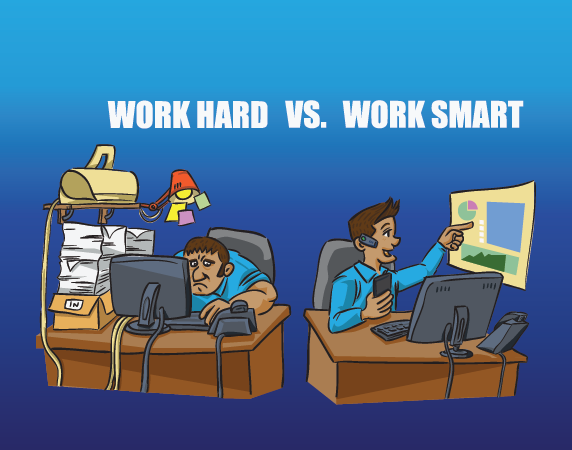
One knee-jerk reaction when such inefficiencies become too disruptive to be ignored is automation. However, mere automation of inefficient processes only accentuates waste. While automation is indeed a step in the right direction, businesses need to also make their processes smarter.
Here are a few ways in which business processes can be tweaked to enable working smart instead of working hard.
- Standardize processes, but one size does not always fit all. What works well in one division may not work well for the company overall. 3M found this out the hard way when they applied Six Sigma not just in accounting, but across-the-board, resulting in stifled innovation in a company where innovation is the key USP.
- Innovate. A 2011 PwC study reports 80% of CEOs believing innovation to drive efficiencies and providing a competitive advantage.
- Leverage on-demand and scalable cloud solutions such as PaaS and IaaS to optimize resources, reduce costs, create innovative products and services, and add value to existing business systems.
- Apply technology to tighten collaboration between stakeholders, including customers. Celina Insurance Group implemented a highly collaborative extranet to bring the company employees, 500+ independent agents and customers closer, and offer easy access to all relevant information, resulted in massive gains.
- Integrate the supply chain with business processes, across the value-chain, in real time, to connect people with the information they require. Diary major Danone reduced the timeline of its production optimization plans from two days to a mere 15 minutes now, by updating and integrating its production planning and scheduling technology.
- Leverage analytics to get a 360-degree view, and derive value, from available data. Apply emerging technologies to unlock data and information resident in physical and digital systems, and subject such data to analytics. Ensure such new intelligence is readily available to those in a position to use it, and actionable to make better decisions.
- Enable a mobile workforce capable of collaborating anytime from anywhere. Today’s executives and customers are always on the move. Mobile apps and workflows save time, improve efficiency, and also unlock new possibilities.
About 70% of CEOs invest in IT to reduce costs and to become more efficient, and 54% of them focus on growth initiatives powered by emerging technologies such as mobility. About 80% of manufacturing businesses expect mobile apps to increase their productivity by at least six percent. Mobile phones powered by cloud-based storage and apps allow employees to save a whopping 57 minutes a day, on average.

Smart employees are already up to the task. They often cobble up their own solutions, taking advantage of the tons of resources available online, when existing business resources do not meet their requirements. About 90% of all employees use cloud-based services, such as Skype and LinkedIn, for their work, and 79% of employees use cloud-based file sharing and collaboration tools, such as Dropbox or Microsoft OneDrive. Needless to say, such improvisations do not do away with all inefficiencies and come with grave security and data privacy risks.
Businesses need to facilitate smart employees by developing custom apps that automate workflows, provide digital forms, and sync offline data. A major stumbling block is the extensive time and resources that development of new custom apps requires. IT departments, already hard-pressed to keep existing systems running, often find the task of designing and updating apps that need to work with multiple platforms and disparate devices, too onerous. The solution is to partner with experienced providers, who not only make available complete and customized solutions, but also chips in with their specialized expertise and experience, to realise smart business processes.
Partnering with us allows you to have the best of both worlds – ability to roll out apps that leverage the latest cutting edge technology to enable smart business processes, without straddling your already overburdened and resource-crunched IT team with more responsibilities.
Stay up to date on what's new

Featured Blogs
Stay up to date on
what's new



Talk To Our Experts
Steve Jobs’s April 2010 prophecy of mobile devices replacing desktops and laptops as the computing devices of choice is now coming true. More people now access the internet using their mobile devices, compared to desktops or laptops. This has its effect in e-commerce as well.
M-commerce is now 34% of all ecommerce transactions, and expected to grow at 31% in 2017. Overall e-commerce is slated to grow at just 15% in the same period, meaning m-commerce is slated to grow 200% faster. Goldman Sachs estimates the total value of m-commerce at $626 billion by 2018, by which time m-commerce would account for half of all e-commerce transactions.
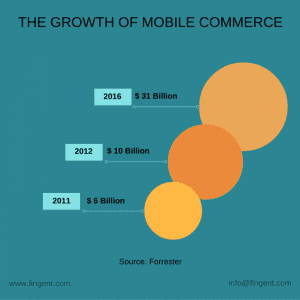
The reason for the surge in m-commerce is obvious. More and more people now prefer the convenience of taking out their smartphones when on the move in a commuter train or when whiling away time at the dentist’s office, rather than take time out to sit in front of a desk, wait for the laptop to boot, and get connected.
Many e-commerce players, quick to spot the trends, have come up with responsive mobile websites and rolled out native mobile apps, to facilitate the mobile-savvy customer. In fact e-tailers no longer have a choice; as 57% of customers won’t even recommend businesses with poor mobile sites, leave alone patronize it. However, most of the early adopters have also discovered merely launching mobile apps or mobile websites is not enough. It is still a fiercely competitive marketplace, and only those who go all out to facilitate the mobile customer wins.
Here are some ways to go all-out, to pamper the highly fickle mobile shopper
Leverage the Power of Simplicity.
The mobile is a consumption-focused device. Play to this strength by making it easy for the user to find what they are looking to consume. Leverage the power of simplicity through a minimalist design and a clean structure. The best apps do not require too much keyboarding or taping on menus, and makes all crucial process, be it registration, login, ordering, check-out, and payment fast and easy. Simplicity and minimalism offers a residual benefit of minimizing data traffic, and speeding up page-loads, which in turns boosts SEO.

Think like a Mobile Customer
The path and trajectory of desktop and mobile user are diametrically different. Successful e-tailers understand the customer’s journey and design the mobile experience around it, delivering a good UX. For instance, since most mobile users shop when on the move, or in the midst of doing something else, anything that shortens interaction time boosts the chances of conversion. Also, since mobile users generally prefer browsing different products, and as such, navigate different screens before actually making a purchase, making it easy to browse many products, add items to the cart, and check out later increases the chances of conversion and making long-term fans. Successful e-tailers also leverage analytics to personalize for the customer, taking into consideration the extremely personal nature of mobile devices.
The path and trajectory of desktop and mobile user are diametrically different. Successful e-tailers understand the customer’s journey and design the mobile experience around it, delivering a good UX. For instance, since most mobile users shop when on the move, or in the midst of doing something else, anything that shortens interaction time boosts the chances of conversion. Also, since mobile users generally prefer browsing different products, and as such, navigate different screens before actually making a purchase, making it easy to browse many products, add items to the cart, and check out later increases the chances of conversion and making long-term fans. Successful e-tailers also leverage analytics to personalize for the customer, taking into consideration the extremely personal nature of mobile devices.
The path and trajectory of desktop and mobile user are diametrically different. Successful e-tailers understand the customer’s journey and design the mobile experience around it, delivering a good UX. For instance, since most mobile users shop when on the move, or in the midst of doing something else, anything that shortens interaction time boosts the chances of conversion. Also, since mobile users generally prefer browsing different products, and as such, navigate different screens before actually making a purchase, making it easy to browse many products, add items to the cart, and check out later increases the chances of conversion and making long-term fans. Successful e-tailers also leverage analytics to personalize for the customer, taking into consideration the extremely personal nature of mobile devices.

Leverage the Power of Innovation
The overriding focus of successful e-tailers is how to uniquely serve their mobile customers. They strive to make their mobile assets dynamic, through promos, deals, offers, discounts, and more. In this, they innovate to ensure their apps leverage the latest developments in technology, or to ride the latest smartphone trends. The best m-commerce apps leverage the unique capability of mobile devices, such as geo-targeting, location-based services, QR codes, and more, to deliver customized offers and deals, and other value-added services.

Integrate Mobile with Overall e-Commerce Strategy
A mobile friendly website or a native app may induce the customer to make a purchase immediately. However, for all the efforts put in by the e-tailer, there is always a possibility of sheer hardware limitations driving poor mobile experience. As such, it is important to integrate the mobile strategy with the overall e-commerce strategy, and provide a consistent experience across channels, where a customer may “capture” of the purchase on mobile and complete the transaction on a larger screen. This is even more important as 53% of customers look at products in brick and mortar store and buy online.

Tie in m-Commerce with Social Media
Mobile and social media are almost inseparable. Facebook, Twitter, Snapchat, Instagram, and the likes are on the screens of nearly everyone stuck on the subway, bus, or train. Successful e-tailers who integrate their m-commerce strategy with their social efforts are able to draw in quite a number of social media visitors straight to the m-commerce site.

There is however, no one-size-fits-all solution. The best way to milk the ongoing m-commerce revolution depends on your specific business. Partnering with us to expand and enhance your mobile strategy allows you to leverage our wide experience and expertise, and is a guaranteed way to save time and improve your ROI.
Stay up to date on what's new

Featured Blogs
Stay up to date on
what's new



